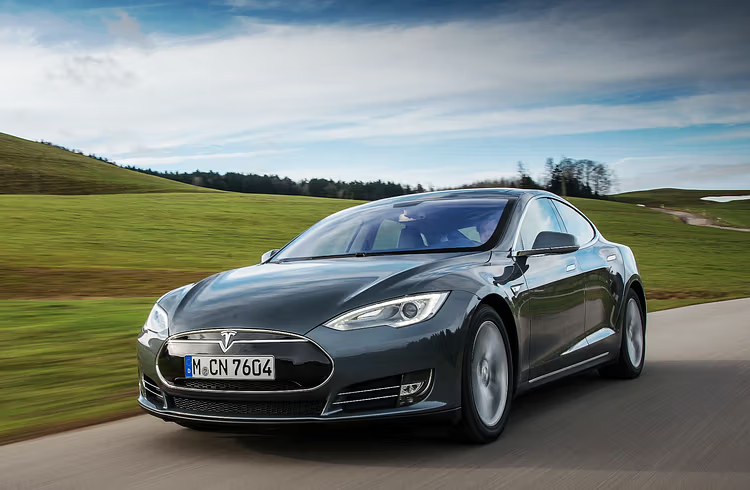In a significant leap for the electric vehicle (EV) industry, Tesla has announced its plan to integrate iron-based batteries into its vehicle lineup by 2024. This move is poised to dramatically reduce costs and make electric vehicles more accessible to a broader audience. With the global EV market booming, understanding how Tesla’s new battery technology could reshape the landscape is essential. In this article, we will delve into the intricacies of Tesla’s iron-based batteries, their impact on EV affordability, and what this means for consumers and the industry alike.
The Rise of Iron-Based Batteries in Electric Vehicles
What Are Iron-Based Batteries?
Iron-based batteries, commonly referred to as Lithium Iron Phosphate (LFP) batteries, are a type of lithium-ion battery that uses iron phosphate as the cathode material. These batteries offer several advantages over traditional lithium-ion batteries, which typically use nickel, cobalt, and manganese.
Key Benefits of LFP Batteries:
- Cost Efficiency: Iron is more abundant and cheaper than cobalt and nickel, leading to lower production costs.
- Safety: LFP batteries are less prone to overheating and are considered safer for use in vehicles.
- Longevity: They have a longer life cycle, offering better durability and reliability.
Tesla’s Strategic Shift to LFP
As reported by Electrek and Bloomberg Green, Tesla’s shift to LFP batteries is part of its strategy to cut production costs and expand its market reach. By 2024, Tesla aims to incorporate these batteries into its standard-range models, potentially reducing the costs of these vehicles by up to 20%. This strategic move is expected to significantly lower the entry barrier for EV ownership, making it more appealing to cost-conscious consumers.
Impact on the EV Market and Consumer Affordability
Lowering the Cost of Entry
- Affordable Models: The introduction of LFP batteries in Tesla’s lineup could lead to a reduction in the starting price of models like the Model 3 and Model Y. This price drop could make Tesla vehicles competitive with other affordable EV options like the Nissan Leaf and Hyundai Kona Electric.
-
Increased Accessibility: With reduced costs, more consumers will be able to consider transitioning from internal combustion engine vehicles to electric ones, accelerating the global shift to clean energy.
A Competitive Edge for Tesla
- Market Dominance: By reducing manufacturing costs, Tesla can potentially increase its market share, especially in emerging markets where price sensitivity is high.
- Sustainability Leadership: Aligning with its sustainability goals, Tesla’s use of LFP batteries, which have a smaller environmental footprint, reinforces its image as an eco-friendly pioneer.
Practical Considerations for EV Buyers
How to Charge LFP Battery-Powered EVs
Charging infrastructure is critical for the adoption of any new battery technology. Here’s what potential EV buyers need to know about charging vehicles equipped with LFP batteries:
- Compatibility: LFP batteries can be charged using existing Tesla Superchargers and other Level 2 charging stations.
- Efficiency: While LFP batteries may charge slightly slower than their nickel-cobalt counterparts, they maintain efficiency over a larger number of charge cycles, which means less degradation over time.
Where to Buy and Compare
Prospective buyers should consider the following when looking to purchase a Tesla with LFP batteries:
- Compare Tesla’s offerings with other EVs in the same price range, such as the BYD Han EV and Volkswagen ID.4.
- Check for regional incentives and rebates which can further reduce the cost of ownership.
- Consider the total cost of ownership, including potential savings on maintenance and fuel compared to traditional vehicles.
The Future of EV Battery Technology
Innovations on the Horizon
As noted by TechCrunch and MIT Technology Review, the future of EV battery technology is rapidly evolving. Companies like Rivian and Lucid Motors are also investing in next-generation battery technologies, including solid-state batteries, which promise even greater energy density and safety. However, Tesla’s adoption of iron-based batteries is a significant step that could set a new industry standard in cost-effective EV production.
Industry Implications
- Supply Chain Adjustments: The shift to LFP batteries requires adjustments in the supply chain, but it offers a more sustainable and stable supply of raw materials.
- Regulatory Influence: Governments may incentivize the adoption of safer and more sustainable battery technologies, impacting future regulations and standards.
Conclusion: A Game Changer for EV Affordability
Tesla’s move to iron-based batteries is more than just a technological advancement; it’s a pivotal moment for the EV industry that could democratize access to electric vehicles. By reducing costs and enhancing safety, Tesla is not only bolstering its market position but also paving the way for a more sustainable automotive future. As potential buyers and enthusiasts, keeping an eye on these developments will be crucial. What do you think about the future of EV affordability with these innovations? Share your thoughts in the comments below and stay tuned for more updates on this exciting journey towards a cleaner, greener world.

